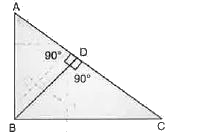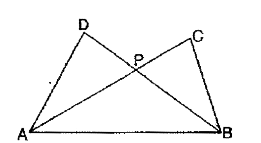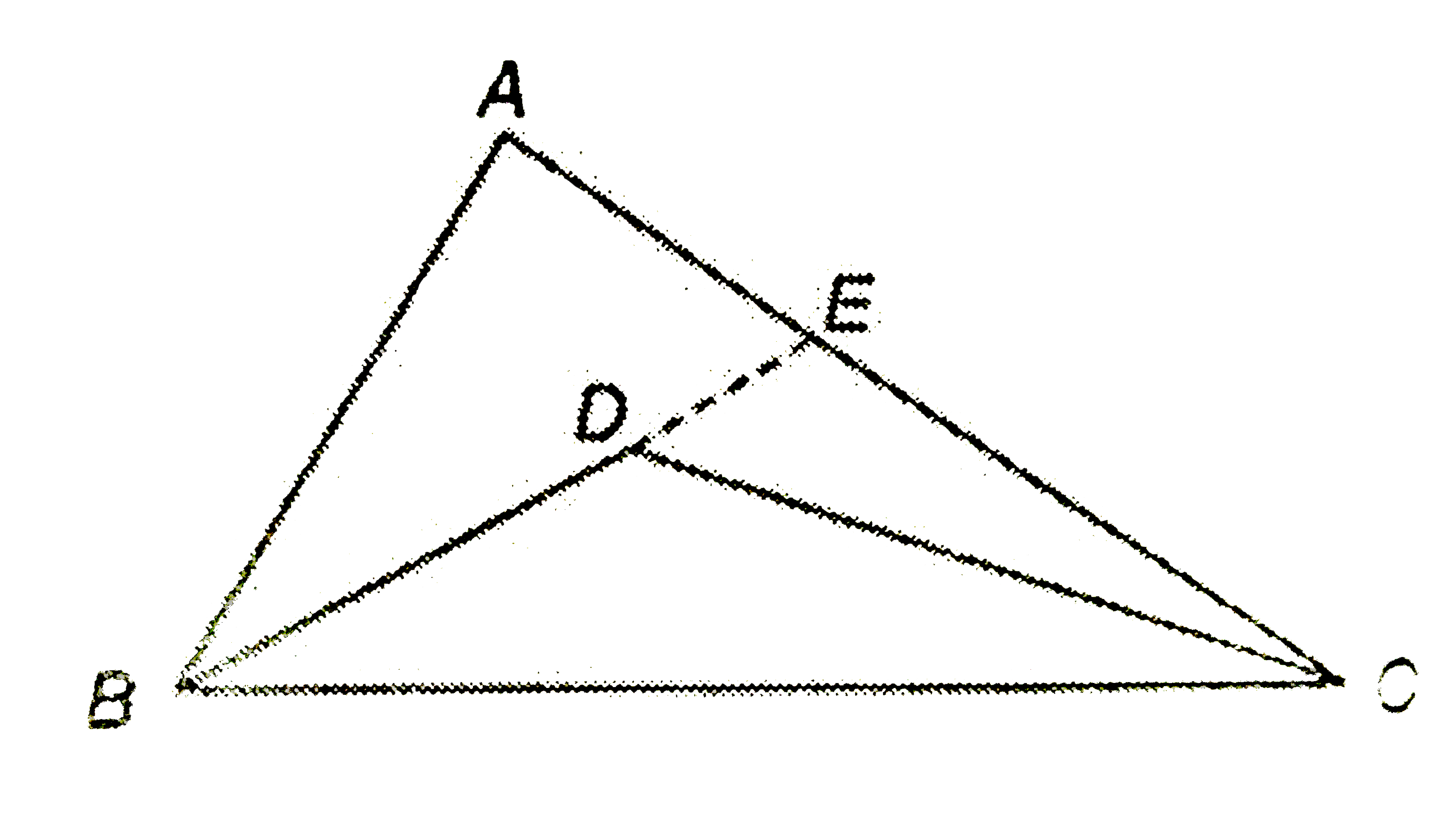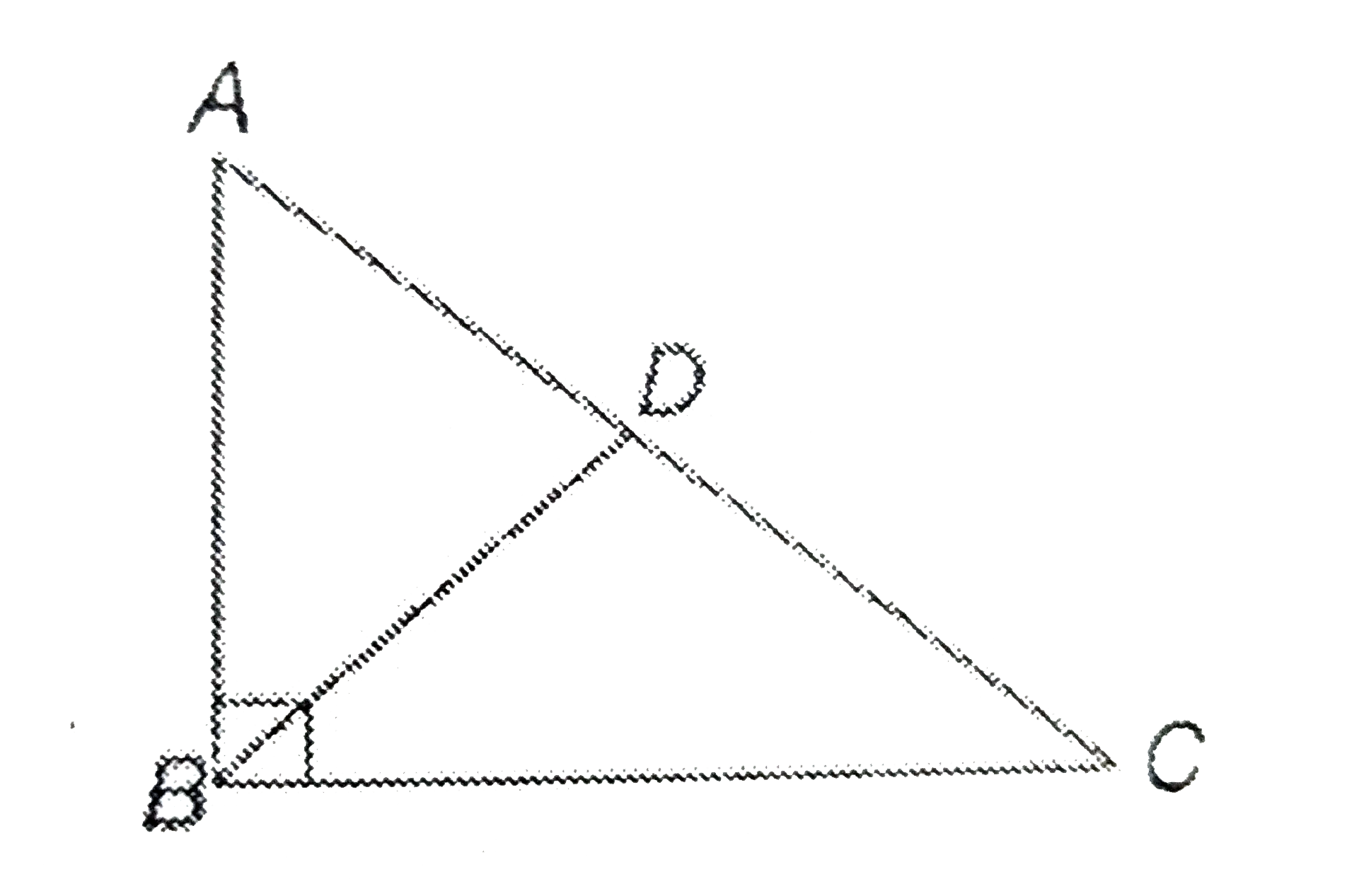In the adjoining figure ∠ABC=90∘ and BD⊥AC, express (AD=DC), in terms of BD ?

The correct Answer is:AD.DC=BD2
Topper's Solved these Questions
- TRIANGLESBOOK - OSWAAL PUBLICATIONCHAPTER - TRIANGLESEXERCISE - TOPIC-1 BASIC PROPORTIONALITY THEOREM (LONG ANSWER TYPE QUESTIONS-(II))
6 Videos
- TRIANGLESBOOK - OSWAAL PUBLICATIONCHAPTER - TRIANGLESEXERCISE - TOPIC-3 AREA OF SIMILAR TRIANGLES (MULTIPLE CHOICE QUESTIONS)
10 Videos
- TRIANGLESBOOK - OSWAAL PUBLICATIONCHAPTER - TRIANGLESEXERCISE - TOPIC-1 BASIC PROPORTIONALITY THEOREM (LONG ANSWER TYPE QUESTIONS)
16 Videos
- SURFACE AREA AND VOLUMESBOOK - OSWAAL PUBLICATIONCHAPTER - SURFACE AREA AND VOLUMESEXERCISE - EXERCISE 15.5
5 Videos
Similar Questions
Knowledge Check
In the given figure AD=BC,AC=BD. Then ΔPAB is
 AequilateralBright angledCscaleneDisosceles
AequilateralBright angledCscaleneDisosceles
In the adjoining figure, AB = AC and BD = DC. Prove that △ADB=△ADC and hence show that
(i) ∠ADB=∠ADC=90∘, (ii) ∠BAD=∠CAD.

View SolutionIn the adjoining figure, ABC is a triangle right-angled at vertex A and AD is altitude.

If BD = 3.6 cm and CD = 6.4 cm, find the length of AD.
View SolutionIn the adjoining figure,AB=AC and BD=DC Prove that ΔADB≡ΔADC and hence show that (i) ∠ADB≡∠ADC=90∘ , (ii) ∠BAD=∠CAD
View SolutionIn the adjoining figure, ABC is a triangle and D is any point in its interior. Show that BD+DC<AB+AC.

View SolutionIn the adjoining figure, ABC is a triangle and D is any point in its interior. Show that BD+DC<AB+AC.

View SolutionIn the adjoining figure, BD = DC and AE = ED. Prove that
area of ΔACE=14 area of ΔABC

View SolutionIn the following figure, ∠ABC=90∘,AD=15 and DC=20.If BD is the bisector of ∠ABC, What is the perimeter of the triangle ABC?

View Solution

